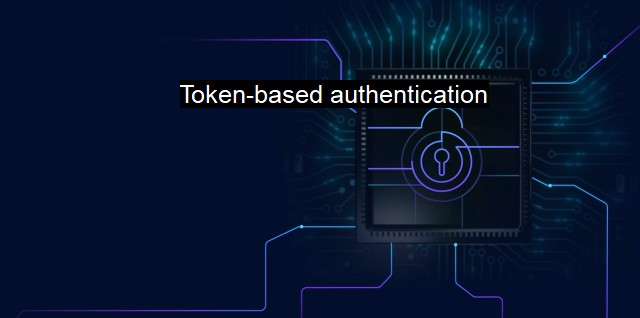What is Token-based authentication?
Advantages of Token-Based Authentication for Protecting Sensitive Data and Resources
Token-based authentication is an important cybersecurity concept, commonly integrated into applications, platforms, systems, and network infrastructures to ensure security and data protection. In simplest terms, token-based authentication is a process of validating the identities of users requesting access to digital resources using randomly generated strings of characters, known as tokens.Authentication is critical to the integrity of any system or network. It is how we confirm that someone or something is who or what it claims to be. This why the practice of username and password checks, fingerprint scans or facial recognition are prevalent. these methods are prone to cyber security risks. As an example, a password crack or theft can render such system permeable for unauthorized access.
Token-based authentication provides a solution to this issue with a more secure verification system. Therein, a user is granted a security token (distinctive string of alphanumeric characters) after entering valid credentials. That token, and not the user's credentials, is then used for subsequent access to resources in the system. These tokens contain encoded user data that, when decrypted by the server, validates the user to access required resources.
Here, tokens are not reusable and are typically time-bound, implying they expire after a certain period or upon the user's logout. This single-expiry condition ensures that even if the token gets stolen during a session, it will soon become useless. These tokens also facilitate secure access across different domains or platforms, which would have been less secure with conventional username-password methods.
Moving on, token-based authentication doesn’t require frequent authentication of the user at every server, thereby providing a seamless and efficient user experience. As multiple requests from a client using the same valid token are accepted without the need for the repeated exchange of credentials, this potentially reduces network traffic thrown to servers.
An additional aspect to consider is server-side memory. Every traditional username-password based session gets stored in a server-side memory. A high number of sessions can encumber the server and may lead to potential memory-fragmentation issues. Conversely, token-based authentication is stateless in nature and doesn't store user information on the server thus saving computing resources which could be critical under high demand/peak loads that would otherwise compromise network performance.
In terms of preventive measures, one has to be diligent with the tokens. If a hacker steals and decrypts it, he/she could pose as an authorized user, resulting in a security breach. Here, antivirus software could play a significant role by running algorithms designed to detect any attempt at malicious intrusions or the presence of unauthorized code patterns passing through network tunnels.
During the era of stringent regulatory scrutiny on data security and management, maintaining the sanctity of user data is of utmost importance and a regulatory requirement. Leveraging token-based authentication helps businesses bolster their data security framework with a secure verification method, hence minimizing chances of cyber attacks.
It's essential to reiterate that cybersecurity is a ceaseless and ever-evolving field. While token-based authentication contributes remarkably to ensuring the security and integrity of digital systems, it is merely one aspect of the multi-faceted and holistic realm of cybersecurity. Concurrent advancements in other aspects like encryption methods, antivirus software formulation, etc., in synergy with token-based authentication, are vital to counter the continuously changing threat landscape of cybersecurity.

Token-based authentication FAQs
What is token-based authentication?
Token-based authentication is a security process that involves the use of an electronic token to authenticate the identity of a user. In cybersecurity and antivirus, this process is used to ensure that only authorized users have access to a system, network or application.How does token-based authentication work?
Token-based authentication works by generating a unique token for each user that is authenticated. The token is then sent to the user and used to authenticate subsequent requests. This process ensures that only authorized users have access to the system or application, and that the data within those systems is protected from unauthorized access.What are the benefits of token-based authentication?
Token-based authentication provides a number of benefits, including increased security and reduced risk of data breaches. Because tokens are unique to each user, it is much harder for hackers to gain unauthorized access to systems or applications. Additionally, token-based authentication is more secure than other methods of authentication, as it does not require the transmission of passwords or other sensitive information over the internet.What are the drawbacks of token-based authentication?
One potential drawback of token-based authentication is that it can be vulnerable to certain types of attacks, such as session hijacking or man-in-the-middle attacks. Additionally, token-based authentication can be more difficult to implement than other forms of authentication, as it requires the use of specialized software and hardware to generate and manage the electronic tokens. Finally, token-based authentication can be more expensive than other forms of authentication, particularly for large organizations that need to authenticate a large number of users.| | A | | | B | | | C | | | D | | | E | | | F | | | G | | | H | | | I | | | J | | | K | | | L | | | M | |
| | N | | | O | | | P | | | Q | | | R | | | S | | | T | | | U | | | V | | | W | | | X | | | Y | | | Z | |
| | 1 | | | 2 | | | 3 | | | 4 | | | 7 | | | 8 | | |||||||